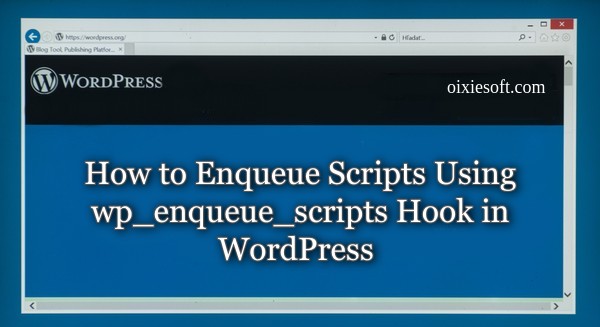
The wp_enqueue_scripts action hook plays a crucial role in WordPress development, working in tandem with the wp_enqueue_script() and wp_enqueue_style() functions to facilitate the output of content on your website.
In this comprehensive tutorial, we will delve into the wp_enqueue_scripts action hook, explore its accompanying functions, and demonstrate multiple use cases that will empower you to enhance your WordPress projects.
How Enqueueing Works in WordPress
Enqueueing in WordPress is the process of adding scripts and stylesheets to your website in a controlled manner. The wp_enqueue_scripts action hook, along with the wp_enqueue_script() and wp_enqueue_style() functions, allows you to manage and load these resources efficiently. It ensures proper ordering, prevents conflicts, and improves performance, resulting in a better user experience.
Understanding wp_enqueue_script
Understanding wp_enqueue_script is essential for effectively adding JavaScript files to your WordPress website.
The wp_enqueue_script function is used to register and enqueue JavaScript files in a controlled and organized manner. It ensures that scripts are loaded in the correct order, preventing conflicts and optimizing performance.
When using wp_enqueue_script, you need to specify a unique handle for the script, its source file, dependencies (if any), version number, and other attributes. By registering the script with wp_register_script and then enqueueing it with wp_enqueue_script, you can ensure that it is properly loaded on the front end of your website.
This approach offers several benefits. It allows you to easily manage script dependencies, ensuring that required scripts are loaded before dependent ones. It also enables you to conditionally enqueue scripts based on specific conditions or pages, improving efficiency and avoiding unnecessary loading.
By understanding and utilizing wp_enqueue_script effectively, you can enhance the performance, organization, and compatibility of JavaScript files on your WordPress website, resulting in a smoother user experience and improved overall functionality.
How to Use wp_enqueue_script in WordPress
To use the wp_enqueue_script function in WordPress, follow these steps:
Step1: Open your theme’s functions.php file. You can find it in your theme’s directory.
Step2: Inside the functions.php file, locate or create a function that hooks into the wp_enqueue_scripts action. This action is triggered on the front end when scripts and stylesheets are enqueued. Example:
function my_theme_enqueue_scripts() {
// Enqueue your scripts here
}
add_action( 'wp_enqueue_scripts', 'my_theme_enqueue_scripts' );
Step3: Within the function, use the wp_enqueue_script function to register and enqueue your JavaScript file(s). Example:
function my_theme_enqueue_scripts() {
wp_enqueue_script( 'my-custom-script', get_template_directory_uri() . '/js/my-script.js', array( 'jquery' ), '1.0', true );
}
In this example:
-
'my-custom-script'is a unique handle for your script.get_template_directory_uri() . '/js/my-script.js'is the path to your JavaScript file. Adjust the path to match the location of your file.array( 'jquery' )is an array of script dependencies. Here, we specify that our script depends on jQuery.'1.0'is the version number of your script. Change it as needed.truemeans the script will be loaded in the footer of the website. Set it tofalseif you want to load it in the header.
Step4: Save the functions.php file.
Conclusion
The wp_enqueue_scripts hook, along with functions like wp_enqueue_script() and wp_enqueue_style(), simplifies the task of adding custom scripts and styles to your WordPress site. It allows for efficient management and organization of these resources.
In this comprehensive tutorial, we have explored the enqueueing process in WordPress. We have provided practical examples of using functions such as wp_register_script(), wp_register_style(), wp_enqueue_script(), and wp_enqueue_style().
We trust that this tutorial has enhanced your understanding of the enqueueing process and its various functions.
